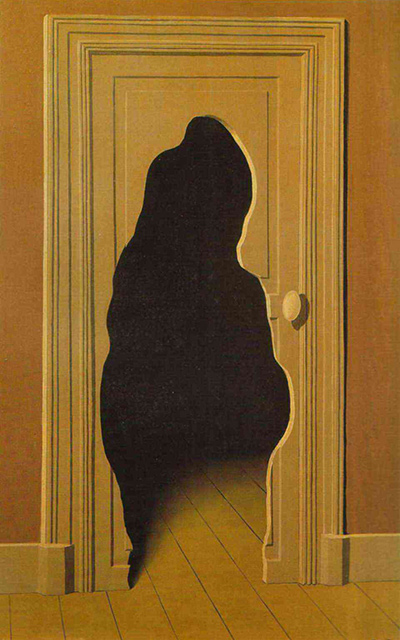"My painting is visible images which conceal nothing...they evoke mystery and indeed when one sees one of my pictures, one asks oneself this simple question 'what does that mean'? It does not mean anything, because mystery means nothing either, it is unknowable," so said Rene Magritte when asked to explain his surrealist work.
This is why, like many surrealist painters, Magritte (1898-1967) used title either to guide the viewer towards the meaning of his work or as a further layer of ambiguity to add mystery to its meaning. In this case we have "La Résponse Imprévue" - The Unexpected Answer - but then the viewer has to ask "What is the question?" In ordinary terms that question might be "Who is at the door?" but the ambiguous shape of the figure (or is it two figures embracing?) in the doorway leaves that question unanswered too.
The void cut through the door in this 1933 surrealist painting also raises further questions: What lies on the other side of the door? How far does the space beyond extend? Would the viewer be welcomed on the other side? and, crucially, Whose room is this?
Like much of Magritte's work, the subject of this work is deliberately obscured, Often this was done by covering the subject or faces literally in a closely-hugging cloth, a technique said to reference the artist's horror on seeing the face of his mother, Regina, draped in the wet white cloth of her dress when her body was pulled from the River Sambre near the family home in Belgium after she committed suicide in 1912 when he was aged 14.
Regina had suffered from depression for several years and was usually kept locked in a room following numerous previous unsuccessful suicide attempts. Light entering the painting's darkened room through the door illuminates nothing beyond a small area at the door, further enhancing the mystery of the room, its owner and its contents. Through this deceptively simple image, Magritte forces the viewer to consider many questions and, ironically, does nothing to provide any answer, expected or otherwise, to these.




